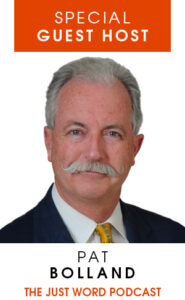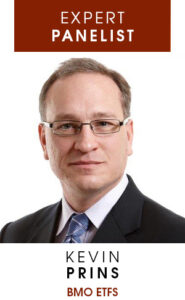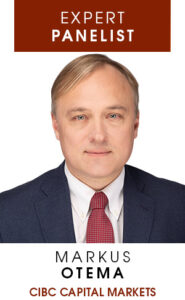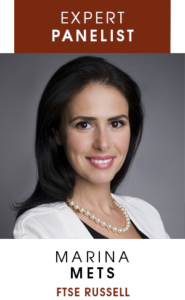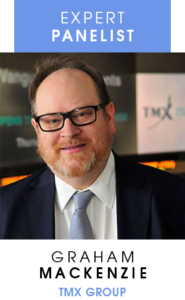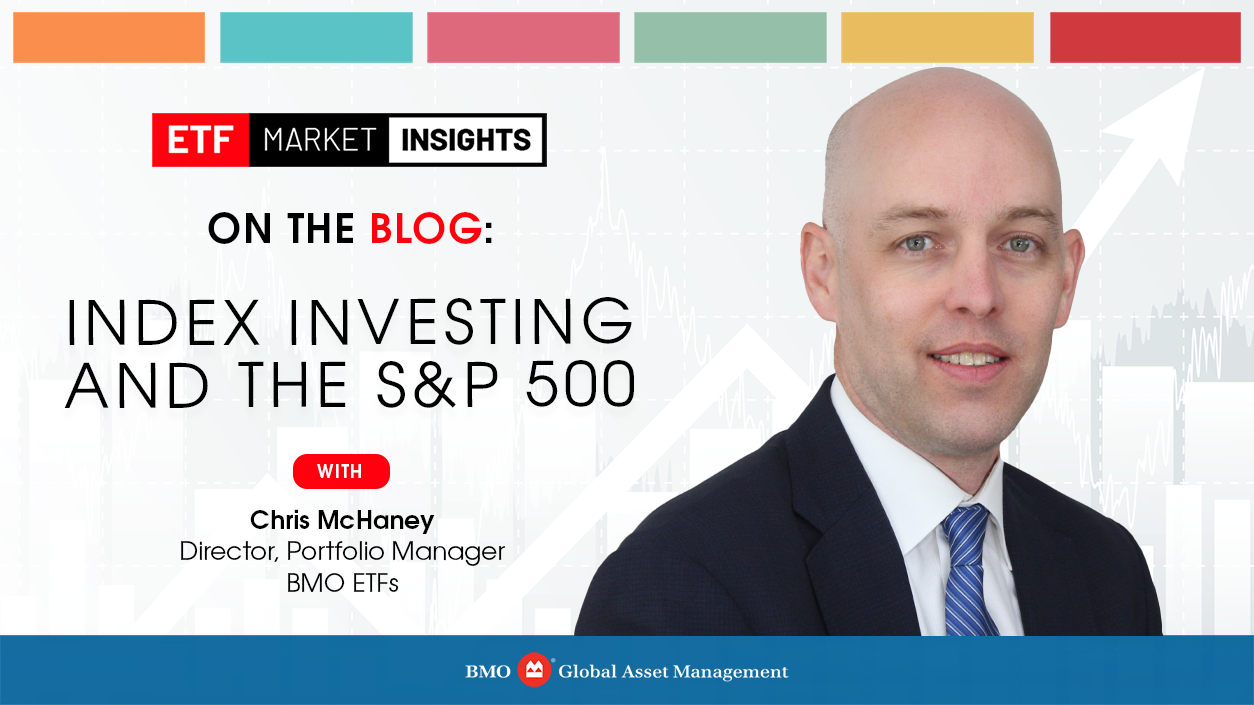
Index investing, a strategy adopted by cost conscious investors and passive investing aficionados is continuing to gain in popularity across individual investors, advisors and institutions alike. The S&P 500 Index is widely regarded as a gauge of the overall large-cap U.S. equities market. The index, which dates back to the 1920’s, includes 500 leading companies and covers approximately 80% of available market capitalization.1 Other popular indices for U.S. equities include the Dow Jones Industrial Average (covering a smaller number of companies ~30), and the Nasdaq 100 Index (tracking the largest 100 companies listed on the Nasdaq Stock Market).
ETFs make index investing more efficient helping investors save time and money, relative to holding all the constituents of their favorite market index. Take the S&P 500 for example, not only would you need to buy 500 companies, you would need to make sure they maintain the appropriate weight in the portfolio over time requiring a lot of time, and money in trading those securities.
ETF units are primarily bought and sold between different investors. This means that there are typically fewer realizations of capital gains and losses with ETFs than with other investment products. Similarly, as passive ETFs track the performance of a specific benchmark, they tend to have lower overall portfolio turnover. Fewer transactions within the ETF again means fewer realizations of capital gains and losses that may flow through to ETF holders.
Investing in the S&P 500 Index has been made simple with ZSP2 – BMO S&P 500 Index ETF. Also available in hedged and USD (ZUE/ZSP.U)2, these ETFs give you exposure to this broad market index at a low cost of 0.09% 6(MER – Management Expense Ratio) and can be used as a core in your portfolio. Index base d ETFs, like ZSP, provide broad market exposure and diversification across various sectors and asset classes according to their underlying index. It’s not about timing the market with index-based ETFs, it’s about time in the market and these solutions provide a long-term strategy for investors.
What does the research show?
Another reason index-based investing is becoming a staple in investors portfolios is the increase in available research showing passive outperforming active over the long term. The best known of this research, the SPIVA report, which coming from S&P Dow Jones Indexes research division has been looking at this phenomenon for 20 years, measuring actively managed funds, against their index benchmarks worldwide.
Looking at the data as of Dec 31st 2023, and focusing on Canadian Equity Funds, 96. 63% of active fund managers underperform the S&P/TSX Composite over 10 years. Put another way just 3.37% of funds outperformed the S&P/TSX composite over that time period.3 This research holds across time periods and geographies with the numbers changing year to year but the story remaining compellingly in favor of passive. While there are active managers that out-perform their benchmark, this can be challenging to do consistently over time, even for the professionals.
Innovation in Index Investing
“Losses loom larger than gains.” – Daniel Kahneman & Amos Tversk4
Famed researchers in behavioural finance, Daniel Kahneman and Amos Tversky once hypothesized the psychological pain of loss is about twice as powerful as the pleasure of gaining. After strong performances from U.S. stocks over the past two quarters, some may find themselves dusting off the pair’s work and asking, is now the time to lock in gains and take some downside insurance?
We have seen a remarkable run from stocks such as Nvidia, lifting the S&P 500 Index to all time highs. This may cause some valuation concerns among investors. The S&P 500 is currently trading at a price-to-earnings ratio9(P/E) of about 25 times, which from a historical perspective can be considered rich relative to the average of 17.5
Recently launched, on April 1, BMO ETFs’ new BMO US Equity Buffer Hedged to CAD ETF – April (ZAPR) which aims to protect returns while providing downside protection. You can now invest in an ETF that tracks the S&P 500 Index, with built in buffer protection.
Amid valuation and other risks, many strategists expect elevated volatility10 to persist over the near- to medium-term this year.6 At the macro-economic level, the U.S. economy seems resilient and has been performing above market expectations with better-than-expected job numbers and higher wage growth, which might keep interest rates higher for much longer than the markets have been pricing in. In turn, this economic robustness leads investors to want to stay invested in the market, despite the various levels of risks and headwinds that exist.
To help navigate these market conditions, BMO ETFs launched ZAPR for clients who may be looking to extend the protection of their portfolio in anticipation of a potential market pullback. Similar to our previous series, the new ZAPR expands the lineup of BMO’s current suite of Buffer ETFs, and seeks to provide investors with peace of mind by eliminating the first 15% of losses on their portfolios over one year (if held from inception and purchased at starting NAV to the end of the Target Outcome Period, which is approximately the first week of April 2024 to last week of March 20255). The potential upside market participation for ZAPR is capped at 10%, while a client’s portfolio will incur no losses if the market declines 15% from its current level. 7
Read More: Stay Invested with Buffer ETFs
A Buffer ETF can compliment or substitute your core equity positions, providing a built-in cushion on the downside to help keep you invested in broad U.S. equities. Since 2010, 90% of the time the market is down over a one-year period, it has been down less than 15%,6 illustrating the chances of being within the buffer zone.
This buffer structure will be an important tool going forward for cautious investors who are concerned about rich valuations and macro-economic risks.
1 S&P Global Indices March 2024
2 Changes in rates of exchange may also reduce the value of your investment.
3 SPIVA Report, Dec 31 2023, S&P Dow Jones Indices
4 Kahneman, D., & Tversky, A., “Prospect theory: An analysis of decision under risk,” Econometrica, 47, 1979, 263-291.
5 Morningstar, March 2024.
6 BMO Global Asset Management, Mar 25 2024
7 An investor that purchases Units of a Structured Outcome ETF other than at starting NAV on the first day of a Target Outcome Period and/or sells Units of a Structured Outcome ETF prior to the end of a Target Outcome Period may experience results that are very different from the target outcomes sought by the Structured Outcome ETF for that Target Outcome Period. BMO Buffer ETFs seeks to provide income and appreciation that match the return of a Reference Index up to a cap (before fees, expenses and taxes), while providing a buffer against the first 15% (before fees, expenses and taxes) of a decrease in the Reference Index over a period of approximately one year, starting from the first business day of the stated outcome period.
8 BMO Global Asset Management/Bloomberg, February 29, 2024.
9 Price to Earnings Ratio (P/E): the current market price of a company share divided by the earnings per share of the company
10 Volatility: Measures how much the price of a security, derivative, or index fluctuates.
Disclosures:
Commissions, management fees and expenses all may be associated with investments in exchange traded funds. Please read the ETF Facts or prospectus of the BMO ETFs before investing. Exchange traded funds are not guaranteed, their values change frequently and past performance may not be repeated.
For a summary of the risks of an investment in the BMO ETFs, please see the specific risks set out in the BMO ETF’s prospectus. BMO ETFs trade like stocks, fluctuate in market value and may trade at a discount to their net asset value, which may increase the risk of loss. Distributions are not guaranteed and are subject to change and/or elimination.
BMO ETFs are managed by BMO Asset Management Inc., which is an investment fund manager and a portfolio manager, and a separate legal entity from Bank of Montreal.
This article is for information purposes. The information contained herein is not, and should not be construed as, investment, tax or legal advice to any party. Particular investments and/or trading strategies should be evaluated relative to the individual’s investment objectives and professional advice should be obtained with respect to any circumstance.
Any statement that necessarily depends on future events may be a forward-looking statement. Forward-looking statements are not guarantees of performance. They involve risks, uncertainties and assumptions. Although such statements are based on assumptions that are believed to be reasonable, there can be no assurance that actual results will not differ materially from expectations. Investors are cautioned not to rely unduly on any forward-looking statements. In connection with any forward-looking statements, investors should carefully consider the areas of risk described in the most recent simplified prospectus.
The Index is a product of S&P Dow Jones Indices LLC or its affiliates (“SPDJI”), and has been licensed for use by the Manager. S&P®, S&P 500®, US 500, The 500, iBoxx®, iTraxx® and CDX® are trademarks of S&P Global, Inc. or its affiliates (“S&P”) and Dow Jones® is a registered trademark of Dow Jones Trademark Holdings LLC (“Dow Jones”), and these trademarks have been licensed for use by SPDJI and sublicensed for certain purposes by the Manager. The ETF is not sponsored, endorsed, sold or promoted by SPDJI, Dow Jones, S&P, their respective affiliates, and none of such parties make any representation regarding the advisability of investing in such product(s) nor do they have any liability for any errors, omissions, or interruptions of the Index.
An investor that purchases Units of a Structured Outcome ETF other than at starting Net Asset Value (NAV) on the first day of a Target Outcome Period and/or sells Units of a Structured Outcome ETF prior to the end of a Target Outcome Period may experience results that are very different from the target outcomes sought by the Structured Outcome ETF for that Target Outcome Period. Both the cap and, where applicable, the buffer are fixed levels that are calculated in relation to the market price of the applicable Reference ETF and a Structured Outcome ETF’s NAV (as Structured herein) at the start of each Target Outcome Period. As the market price of the applicable Reference ETF and the Structured Outcome ETF’s NAV will change over the Target Outcome Period, an investor acquiring Units of a Structured Outcome ETF after the start of a Target Outcome Period will likely have a different return potential than an investor who purchased Units of a Structured Outcome ETF at the start of the Target Outcome Period. This is because while the cap and, as applicable, the buffer for the Target Outcome Period are fixed levels that remain constant throughout the Target Outcome Period, an investor purchasing Units of a Structured Outcome ETF at market value during the Target Outcome Period likely purchase Units of a Structured Outcome ETF at a market price that is different from the Structured Outcome ETF’s NAV at the start of the Target Outcome Period (i.e., the NAV that the cap and, as applicable, the buffer reference). In addition, the market price of the applicable Reference ETF is likely to be different from the price of that Reference ETF at the start of the Target Outcome Period. To achieve the intended target outcomes sought by a Structured Outcome ETF for a Target Outcome Period, an investor must hold Units of the Structured Outcome ETF for that entire Target Outcome Period.
®/™Registered trademarks/trademark of Bank of Montreal, used under licence.















